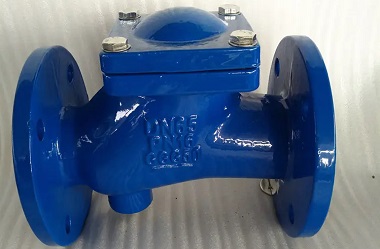Time:2022/10/17Views:139
Overview:
The check valve is an automatic valve used to open the pipeline system when the medium is upstream and close the reverse flow. Its main function is to prevent the backflow of the medium, the reversal of the pump and the driving machinery, to prevent the water shock wave generated when the pump and the driving motor suddenly stop running, and to reduce the damage to the pipeline system. Check valves can be divided into five categories according to the relative displacement of the closing part and the seat: lift type, swing type, disc type, diaphragm type and spherical check valves. For the above check valves, most of them have the following shortcomings: "loud noise" and vibration due to water hammer action when closed; Because the valve plate vibration causes the valve "joint parts" between the shaft and the sleeve to produce mechanical friction movement, when the valve plate vibration frequency is too high, the shaft and the sleeve will produce mechanical friction movement, valve plate displacement, seal failure, sometimes cause the valve plate to fall off, so that the system protection failure; The fluid flow in the valve is disturbed, the flow resistance loss is large, and the energy loss is serious. In order to avoid and improve the above shortcomings, the spherical check valve with its good sealing, minimal flow resistance and other performance advantages, has been widely used and promoted, its structure from the initial "single ball" check valve gradually improved to the "independent multi-channel multi-ball" check valve.
Check valve is one of the most commonly used equipment for fluid transmission. The existing check valve has the problems of high resistance and high energy consumption. Reducing the flow resistance coefficient is an important way to save energy in fluid transmission. Common check valves include spherical check valves, sandwich check valves and so on. The common disadvantage of these check valves is that when the fluid is flowing forward and the check valve is opened, some parts of the check valve, such as the valve disc or ball, are in the center of the flow path, and there is a certain retention of the water surface, which is a large resistance to the flow of the fluid, and the water pressure is reduced, so that the energy is wasted.

Structure and working principle:
The spherical check valve is a multi-ball, multi-channel, multi-cone type reverse fluid structure of the check valve, mainly by the front and back valve body, rubber ball, cone body and so on.
The working principle is: the rubber ball rolls in the ball cover for a short stroke to realize the opening and closing of the valve. When the pump is started, the water under the action of pressure flushes the rubber ball, so that the rubber ball rolls to the right side, the cone body in the rear valve body fixed its position, the check valve is opened; After the pump stops, due to the return water pressure in the piping system, the rubber ball is forced to roll to the left front valve body to achieve the closing of the check valve. The rubber ball is made of hollow steel ball, and the rubber with good elasticity can ensure the sealing and reduce the damage to the pipeline system during the valve closing process. The cone body with holes has a fixed effect on the steel ball when the valve is opened and eliminates the pressure of the contact area between the rubber ball and the cone body, so that the contact is surface contact, and reduces the hydraulic loss caused by the shaking of the rubber ball in the valve body.